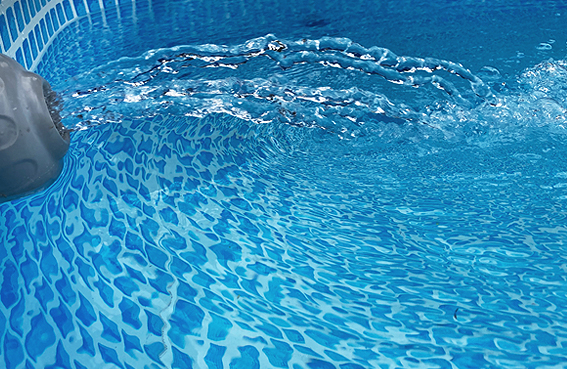Nancy L. Martin 1, Paul Bass 2, Steven N. Liss 3
Abstract
Chlorine or sodium hypochlorite (NaOCl) has long been used as an effective disinfectant for drinking water [1], its use first coming into practice during the mid 1880s to help deal with typhoid fever epidemics in the port of Pola on the Adriatic Sea and in Maidstone, England [2]. Since that time, owing to the important public health outcome from the inactivation of microbial pathogens in drinking water supplies, the demands for cost effective, large-scale provision of potable water have driven an expansion in the use of chlorination worldwide. Communities ranging in size from large urban centres to individual family homes in rural settings all require access to safe drinking water that is provided through a wide variety of distribution system types. These systems experience a range of operational issues that are often of a microbial character, such as persistence of pathogens and development of microbial biofilms for which disinfection or microbial control strategies are important [3].
In addition to drinking water, chlorination is frequently used for disinfection of water in swimming pools [4] and tertiary treatment of wastewater [1]. Increasingly however, evidence suggests that the residual byproducts of water disinfection when using chlorination, such as trihalomethanes, can have negative health effects [5–7]. In addition, environmental conditions can occur where chlorine is not effective in adequately disinfecting water, leading to risk of infection [2, 8, 9]. Alternative measures to chlorination or post-chlorination applications that mitigate the negative aspects could extend the usefulness of chlorine in providing safe drinking water.
Hydrogen peroxide (H2O2) has also been used for many years for water disinfection [2] and is generally considered to have low ecotoxicity as well as having no odor or colour [10, 11]. Oxidizing agents such as H2O2, also commonly known as reactive oxygen species (ROS), have also been extensively used as antiseptics however their lack of specificity to microbial cells over host/mammalian cells have tended to limit the use of H2O2 to topical therapeutic applications [12]. In order for H2O2 to be an effective microbicide it must be able to overcome the myriad of cellular mechanisms that are in place to deal with ROS that occur normally due to aerobic respiration, as well as inducible defence mechanisms that provide antioxidizing activities in the presence of exogenous oxidants, a situation termed oxidative stress. Bacterial pathogens have probably evolved ROS-responsive defence mechanisms to help deal with oxidative killing that is part of the host defence against invading microbes [12].
Dental unit water systems, used to irrigate patients’ mouths during treatments, pose a significant water disinfection challenge as they are often contaminated with high numbers of bacteria, including opportunistic pathogens and organisms frequently forming biofilms. A recent study looked at combinations of silver and H2O2, as well as other compounds, to disinfect the dental units and found a silver/ H2O2combination to be the most effective [16]. Early studies examining the biocidal effects of hydrogen peroxide combined with ionic silver clearly showed a synergistic killing effect against Escherichia coli [17, 18] while more recent studies have examined efficacy against a broader range of Enteriobacteriaceae [19] and organisms commonly found in swimming pools [20] while more recently silver is employed in nanoparticle formulations [21].
Silver, a biologically non-essential metal, has been investigated and used as a biocide for many years [22], where multiple strategies are being proposed for treatment of drinking water [23–25]. Treatment of drinking water systems with silver in combination with copper [26, 27] and of hospital hot water systems with a silver/hydrogen peroxide compound [28] to prevent Legionella has been shown to be efficacious. The World Health Organization deemed that up to 100 ug/L (ppb) silver could be present in drinking water without posing health risks [29]. The monovalent silver cation (Ag[I]) is the active species, interacting with amines, hydroxyls, phosphates and thiols via their nitrogen, oxygen and sulfur-containing electron donating groups both at bacterial membranes and within the cell [21, 22]. These interactions ultimately lead to disruption of the proton motive force, deregulation of the electron transport system and increased membrane permeability leading to cell death [21].
NSF/ANSI 60: Drinking Water Treatment Chemicals – Health Effects is an American National Standard that establishes the minimum health-effects requirements for the chemicals, chemical contaminants and impurities that are directly added to drinking water from drinking water treatment chemicals. This standard does not establish performance or taste and odor requirements for drinking water treatment chemicals.
Chemicals within the scope of this standard include but aren’t limited to:
- Corrosion and scale inhibitors
- Coagulants and flocculants
- Disinfection and oxidation chemicals
- Well-drilling aids
- pH adjustment, softening, precipitation and sequestering chemicals
- All other specialty chemicals used in drinking water treatment
- The standard is routinely monitored and updated by a joint committee comprised of equal parts public health experts, end users and industry members.
National Library of Medicine - Institutes of Health (Public Study)
National Library of Medicine - Institutes of Health (Public Study)


